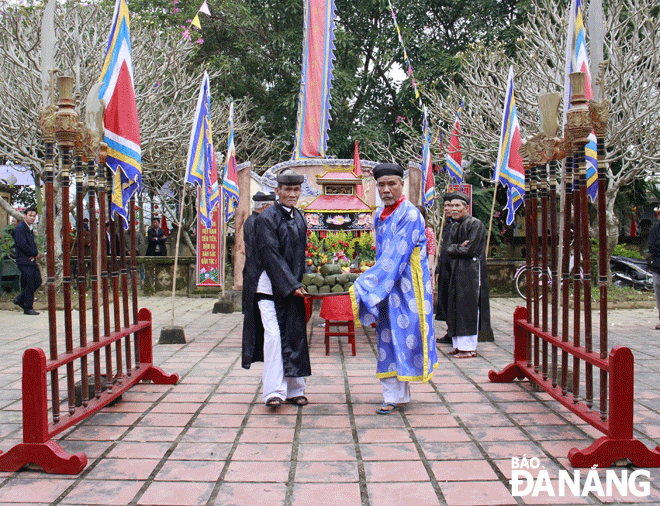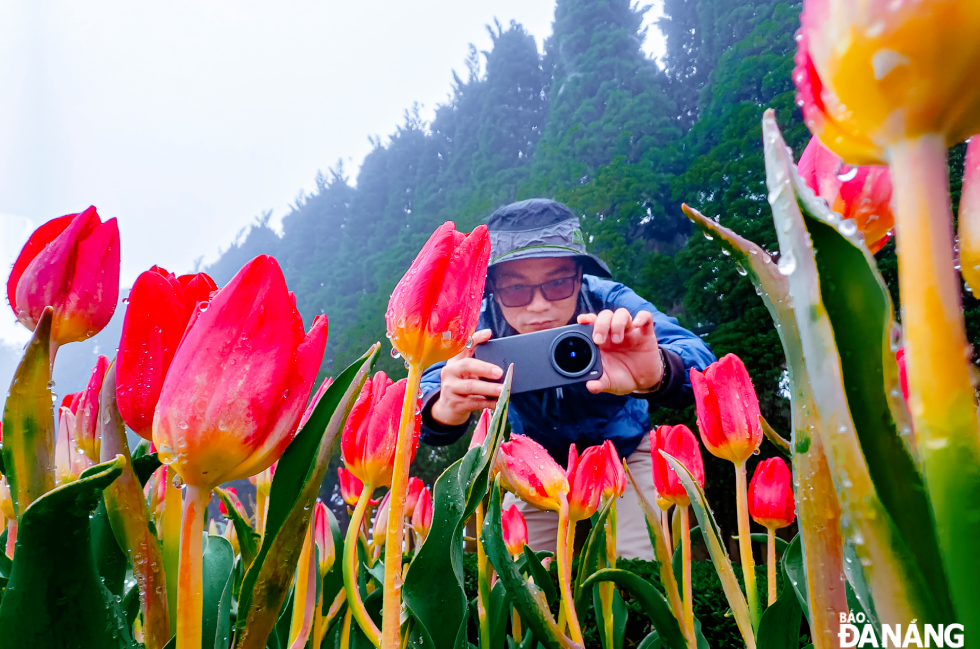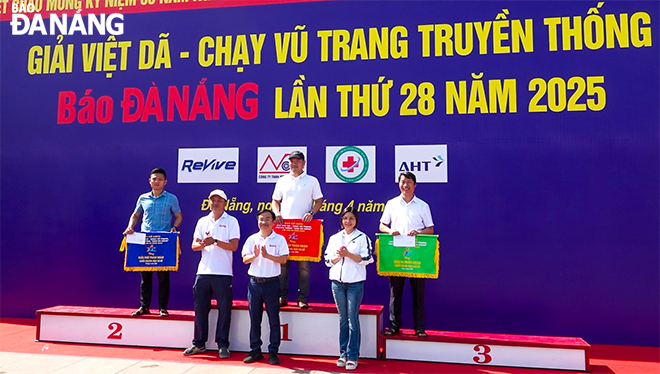Maximising values of cultural and historical relics in Hoa Vang District
Da Nang’s Hoa Vang District is rich in cultural identity, a system of historical relics and unique traditional cuisine. In the current context, the exploitation of these resources for traditional education and tourism development is an appropriate direction, both helping to promote the value of the relics and to preserve and restore local precious assets.
 |
| The Tuy Loan village communal house festival in Hoa Vang District is one of the festivals held on a large scale with many rituals and festive activities. Photo: X.D |
Promoting the value of relics combined with traditional education
According to Secretary of the Hoa Vang District Party Committee To Van Hung, the locality is now home to 33 ranked historical, cultural and architectural relics, including 6 national-level and 27 municipal-level relics.
In addition, four other relics have had their documents submitted to the municipal government to be recognised as municipal-level ones.
Over the past time, the district has always paid attention to preserving and promoting the value of relics through investing and organising many activities to preserve the local characteristics and traditions.
Between 2016 and 2021, more than VND50 billion were poured into embellishing 15 historical, cultural and architectural relics in the district.
In addition, the organisation of activities associated with the relics is always maintained annually, thereby contributing to promoting values and preserving the beauty of local historical and cultural relics, and meeting the needs of spiritual activities of local residents and visitors.
Most of the cultural and historical relics in the district are associated with the revolutionary struggle of people of Da Nang in general and Hoa Vang in particular. Each relic carries in itself many different values.
Head of the Political - Ideological Office under the municipal Department of Education and Training Ngo Ngoc Hoang Vuong said that the department is deploying a set of local educational materials under the new general education programme for grades 1, 2, 3, 6 and 7 with topics related to relics in Hoa Vang District. In addition, extracurricular activities will be organised at cultural, historical and revolutionary relics in the district. The purpose is to help pupils learn and promote the precious historical, cultural and traditional values of their homeland.
In the coming time, the municipal Department of Education and Training and the Hoa Vang District authorities will organise extracurricular programme at historical relic sites for local pupils and students, with a focus on the Hoa Vang District Party Committee's revolutionary base, Go Ha relic site, and others.
Effectively tapping potential of tourism
Despite being rich in natural resources, the promoting of the values of relics in Hoa Vang District has yet to commensurate with the locality’s potential. Some relics after being upgraded have not been known to many tourists.
Director of the municipal Department of Culture and Sports Pham Tan Xu said that the system of relics in Hoa Vang District is diverse, but the scale is still small compared to other localities, so it has not drawn much attention from tourists. The advertising forms are not rich and creative, so the effectiveness is not high.
Aside from a number of well-organized festivals such as Tuy Loan and Bo Ban village communal house festivals, other folk festivals are monotonous and lack of entertainment activities.
In addition, there is a similar phenomenon between festivals, especially the village communal house festivals, so it more or less loses the diversity and richness of such festivals. Therefore, Director Xu stressed the need for Hoa Vang District to focus on the characteristics of this type of tourism culture.
Special attention should be paid to implementing the model of connecting heritages with tourism journeys, and setting goals of developing cultural heritage tourism for communities with relics, he added.
In addition, it is necessary to improve the quality of human resources performing the task of preserving and embellishing historical relics as well as a team of tour guides at relics to serve tourists, Mr. Xu noted.
According to Deputy Director of the municipal Department of Tourism Tan Van Vuong, in October 2022, the municipal People's Committee issued a project to orient the tourism development of Da Nang to 2030, with a vision to 2045. Under the project, cultural-historical tourism and eco-tourism is identified as typical tourism products, whilst community, agricultural and rural tourism is the main tourism product to create a difference and competitive advantage for Da Nang tourism.
Mr. Vuong underlined a must-do for Hoa Vang District to coordinate with the municipal Department of Tourism and the city’s Tourism Association to conduct surveys and propose some potential relics to embellish, thereby meeting the requirements of landscape, environment, infrastructure, services and festivals to serve tourists.
Importance should be attached to connecting relics with other types of tourism to form community, ecological and agricultural tourist clusters/spots associated with culture and history, he emphasised.
He said, there should be mechanisms to support, encourage and create favourable conditions for businesses and people to participate in exploiting the value of relics associated with tourism, as well as to invest in the development of professional tourist clusters/spots.
“The municipal Department of Tourism always accompanies, facilitates, supports and coordinates with the Hoa Vang District authorities in a bid to soon promote the development of district tourism, contributing to building the Da Nang tourism brand” Mr. Vuong affirmed.
Reporting by X.DUNG, V.THANG - Translating by M.DUNG








